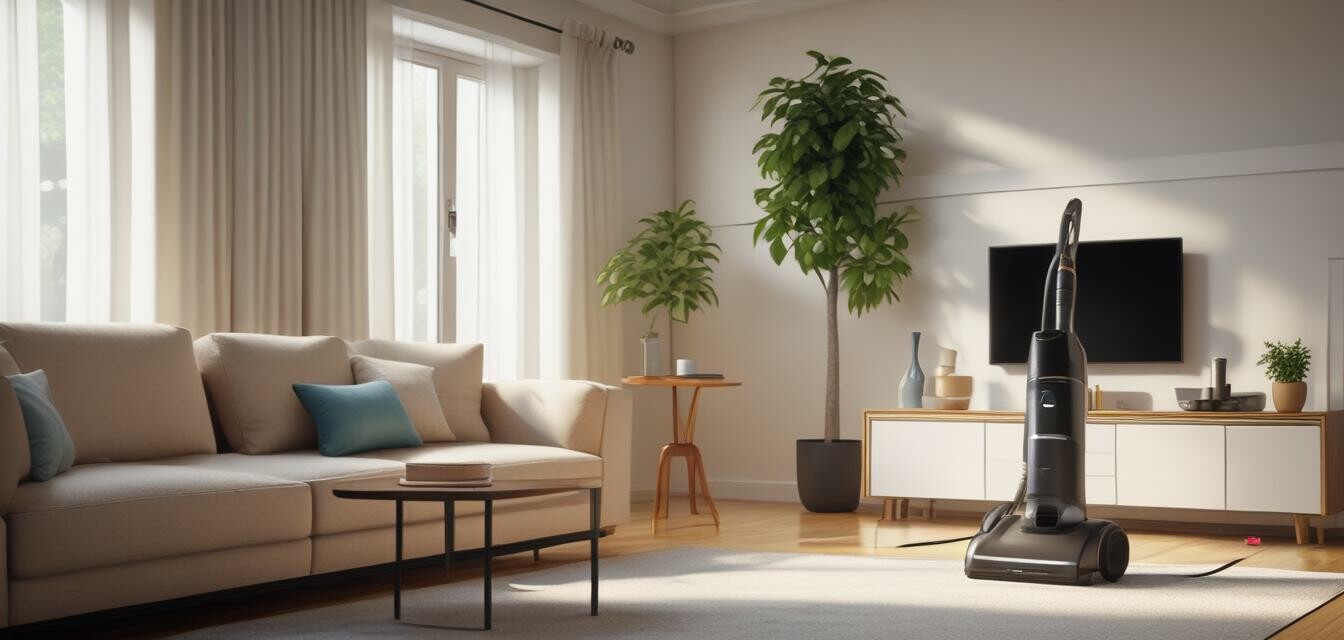
This article was generated using AI and is based on real customer reviews from the Amazon platform. It contains affiliate links, meaning we may earn a commission—at no extra cost to you. As Amazon Associates, we earn from qualifying purchases.
Cleaning Your Vacuum: A Step-by-Step Guide
Key Takeaways
- Regular cleaning of your vacuum enhances its performance and longevity.
- Understanding different vacuum types is key to effective cleaning.
- Follow a step-by-step guide to ensure thorough cleaning.
- Regular maintenance will help reduce allergens in your home.
Cleaning your vacuum may not be something that crosses your mind often, but it’s essential for maintaining its performance, especially when it's designed to tackle allergens. In this comprehensive guide, we will explore the step-by-step process for cleaning various types of allergy-friendly vacuums.
Why is vacuum maintenance important?
Vacuums are essential tools in maintaining a clean and healthy home, especially for those suffering from allergies. However, if not properly maintained, they can release more allergens than they eliminate. Regular cleaning keeps your vacuum functioning optimally, extending its life and ensuring that it effectively reduces allergens.
Types of vacuums
Before diving into the cleaning process, let’s look at the common types of vacuums:
| Type of Vacuum | Description |
|---|---|
| Bagged Vacuums | Utilize a disposable bag to collect dirt and debris, reducing allergen exposure during disposal. |
| Bagless Vacuums | Have a dust container that can be emptied, but require regular emptying and cleaning to avoid spills. |
| HEPA Filter Vacuums | Designed with HEPA filters to trap allergens and fine dust, ideal for allergy sufferers. |
| Robotic Vacuums | Autonomously clean floors, needing minimal human intervention, but still require periodic cleaning. |
Step-by-Step Cleaning Guide
1. Gather your supplies
Before you start cleaning, make sure you have the following supplies:
- Soft cloth or microfiber cloth
- Warm soapy water
- Vacuum safe brush
- Replacement bags or filters if necessary
- Container for dust accumulation
2. Disconnect your vacuum
Ensure that your vacuum is unplugged before you start cleaning to avoid any risk of electrical shock.
3. Clean or replace filters
Most vacuums come with filters that need regular maintenance. Depending on your vacuum type, filters should be cleaned or replaced as follows:
| Filter Type | Cleaning Frequency | Replacement Recommendation |
|---|---|---|
| HEPA Filter | Every 6 months | Every 2-3 years |
| Foam Filter | Every month | Every year |
| Carbon Filter | Every 3 months | As needed |
4. Clear the brush and attachments
Check the roller brush for hair and debris. Clean it using scissors to cut trapped hair, then pull out any remaining pieces using your hands or a cloth.
5. Empty the dust container or replace bags
If you have a bagless vacuum, empty the dust container over an outside trash can. For bagged vacuums, replace the bag when it is ¾ full to maintain suction.
6. Wipe down the exterior
Using a damp cloth, wipe down the exterior and handle of your vacuum to remove any dust or grime.
7. Reassemble your vacuum
Once everything is cleaned and dried, reassemble your vacuum, ensuring all parts are secured correctly.
Tips for ongoing maintenance
Maintenance Tips
- Schedule regular cleaning sessions every 1-3 months based on usage.
- Keep your vacuum stored in a dry place to prevent moisture buildup.
- Check for clogs in the hose periodically to maintain suction power.
- Refer to your vacuum manual for specific cleaning and maintenance guidelines.
Conclusion
Cleaning your vacuum is a crucial step in maintaining its performance and ensuring a healthier home environment. By following this step-by-step guide, you can keep your vacuum in optimal condition and continue to reduce allergens effectively.
Additional resources
For more tips on maintaining your vacuum and ensuring a clean home, consider checking out our guides on Buying Guides and News and Trends.